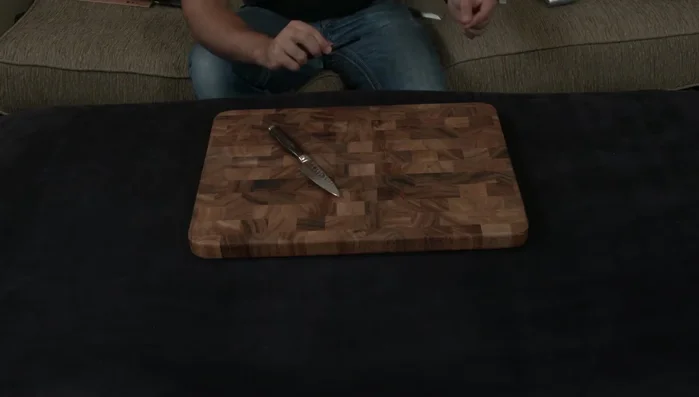Choosing the right paring knife can significantly impact your cooking experience. This comparison pits two popular contenders against each other: the Shun Premier and the Victorinox Fibrox. While both knives offer sharp, non-serrated blades suitable for precision work, their similarities end there. This in-depth review delves into the key differences between these knives, examining their construction, materials, performance, and long-term value. We'll explore the advantages and disadvantages of each to help you determine which knife best aligns with your needs and budget.This showdown will analyze the impact of hand-forged versus stamped construction, comparing the high-end VG-10 steel of the Shun Premier to the more standard steel of the Victorinox Fibrox. We'll also compare their handle designs, considering both aesthetics and functionality. Finally, we'll weigh the importance of features like lifetime warranties and free sharpening services in determining the overall value proposition of each knife. By the end, you'll have a clear understanding of which knife emerges victorious in this crucial kitchen tool battle.
Pros And Cons
- More budget-conscious
- Lifetime warranty
- Stamped knife (machine-made)
- Not full tang
- 58 hardness (less resilient to bending)
- Requires more frequent sharpening
- Fibrox handle (no end cap)
- Forged knife made by hand
- Full tang
- Uses VG10 steel (gold standard)
- 61 hardness (more resilient to bending)
- Longer time between sharpening
- Clad in 32 layers of stainless steel (resistant to pitting, staining, rusting)
- Damascus pattern
- Wood handle
- Hammered finish prevents food sticking
- Lifetime warranty
- Lifetime free sharpening
- Harder steel may chip if abused
Read more: 10 Best Ceramic Sushi Knives: Ultimate Guide
Similarities: Surprisingly Few
At first glance, the Shun Premier and Victorinox Fibrox paring knives might seem similar. They are both sharp, non-serrated blades designed for precision work. However, these superficial similarities quickly fade when you delve into the details. Beyond the basic functionality, these two knives diverge significantly in construction, materials, and overall performance.

Both knives boast similar cutting angles, around 15-16 degrees, offering efficient slicing. However, this shared characteristic is dwarfed by their profound differences in construction and materials, which dramatically impact their performance and longevity.

Construction and Tang: Forged vs. Stamped
The most significant difference lies in their construction. The Shun Premier is a hand-forged knife, a testament to traditional craftsmanship. This method creates a blade with superior strength and balance. In contrast, the Victorinox Fibrox is a stamped knife, a mass-produced option that offers affordability but sacrifices some of the quality and durability found in a forged knife.

The Shun Premier boasts a full tang, extending the length of the blade through the entire handle. This eliminates the pivot point present in the Victorinox, resulting in increased strength and stability during cutting. The partial tang of the Victorinox is a crucial point to consider; while adequate for paring tasks, it can compromise the knife's strength and longevity when used for more demanding applications.

Steel Quality and Hardness: VG-10 vs. Victorinox Steel
The Shun Premier utilizes VG-10 steel, a high-end steel known for its exceptional sharpness and edge retention. Its 61 Rockwell hardness rating indicates superior resilience and resistance to bending during cutting. The Victorinox Fibrox uses a more standard steel with a 58 Rockwell hardness, making it less resistant to bending but easier to sharpen.

The higher hardness of the Shun Premier translates to longer periods between sharpening, a significant advantage for professional and serious home cooks. However, this hardness can make it more susceptible to chipping if misused or subjected to excessive force. The softer steel of the Victorinox is less prone to chipping but requires more frequent sharpening.

Handle and Design: Aesthetics and Functionality
Beyond steel quality, the handles set these knives apart. The Shun Premier features a beautiful Pakkawood handle, known for its durability and elegant aesthetic appeal, showcasing a high-end feel. The Victorinox Fibrox, on the other hand, sports a simple yet functional Fibrox handle, praised for its non-slip grip and ease of cleaning.

The Shun Premier's layered construction, including its damascus pattern, not only adds to its visual appeal but also contributes to its exceptional resistance to corrosion, rust, and staining. The Victorinox's simpler design, while less visually striking, provides a practical, comfortable grip suitable for various culinary tasks.

Warranty and Sharpening: A Key Differentiator
Both brands offer lifetime warranties, demonstrating confidence in their products' durability. However, the Shun Premier offers a significant advantage: lifetime free sharpening. This feature significantly reduces the long-term cost of ownership, negating much of the initial price difference between the two knives.

While both knives are excellent and boast strong guarantees, Shun's complimentary lifetime sharpening service is a substantial perk. The cost of professional sharpening adds up quickly, particularly for high-end knives, making the Shun Premier a potentially more economical option over the long term.
Conclusion: Choosing the Right Knife
Ultimately, the best choice depends on your individual needs and priorities. The Shun Premier offers exceptional quality, superior materials, and lifetime free sharpening, making it a worthwhile investment for serious home cooks or professionals who prioritize performance and longevity. The superior quality of the Shun is noticeable and worth the higher price.

The Victorinox Fibrox excels in value and practicality. Its affordability, durability, and ease of maintenance make it an excellent choice for everyday use or those on a tighter budget. If you frequently abuse knives or require a highly resilient blade, the Victorinox might be the more suitable option due to its lower hardness.

